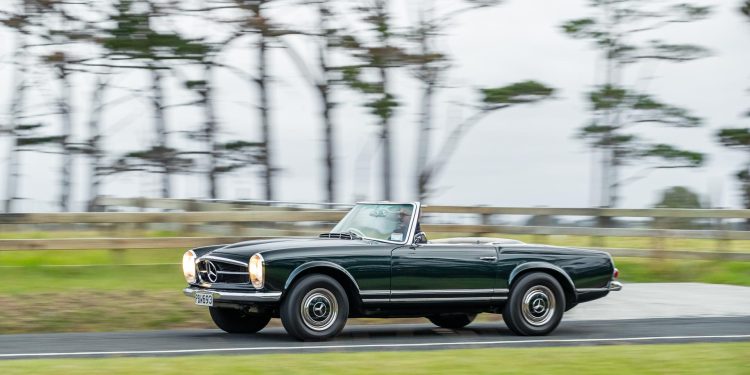1964 Mercedes-Benz 230 SL – Pagoda
Words: Mike Coote | Photos: Isaac Western
The now proud owner of this Mercedes-Benz 230 SL recounts the tale of how he finally got his dream ride ready and registered for life in New Zealand.
Back in 2018, I wrote a list of classic cars that I thought I’d quite like to own. The 13 cars on it were a varied bunch; some of them weren’t even classics, like the Citroen C6 and Renault Avantime.
In the mix was an Alfa Sprint, Jaguar’s XJ6 V12, a Renault A4, the Lamborghini Urraco and a Mercedes-Benz SL ‘Pagoda’.
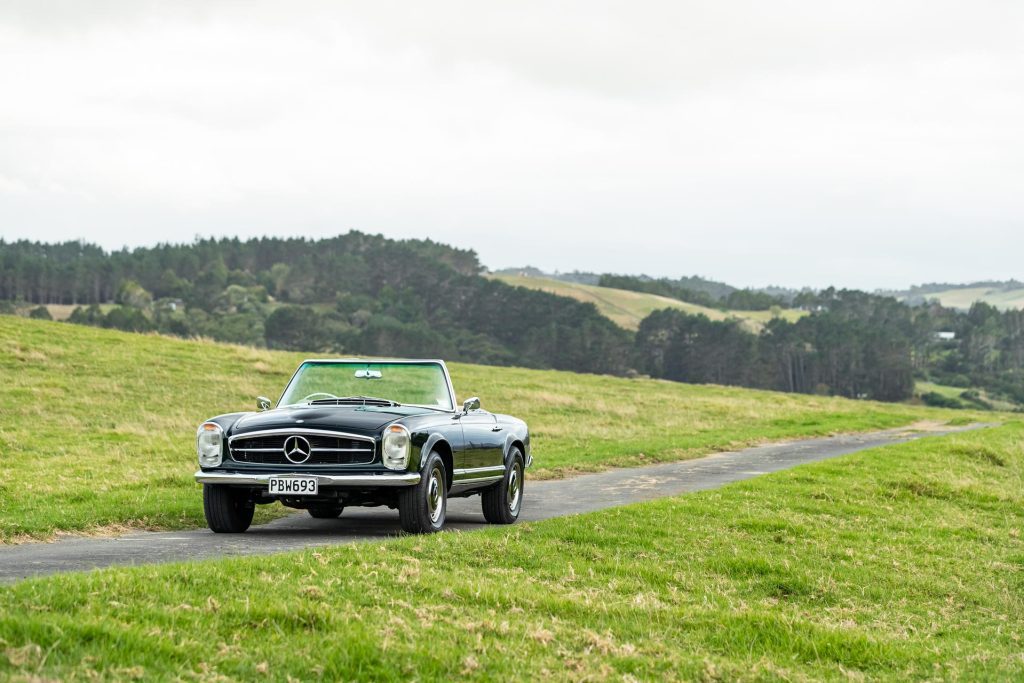
My wife and my three teenage kids could not have been more disinterested however. So, having no external input to moderate my mad desires, I found a 230 SL Pagoda online in Australia, which seemed quite cheap compared with others for sale.
In a flourish of foolishness we booked a weekend in Sydney. It was a great little trip and the car seemed good. The seller dropped the price during negotiations, and so the deal was done.
The car arrived in NZ three months later and I drove it to The Toy Shop in Mt Eden. The previous owner had purchased a new six-speed manual for it from The SL Shop in the UK.
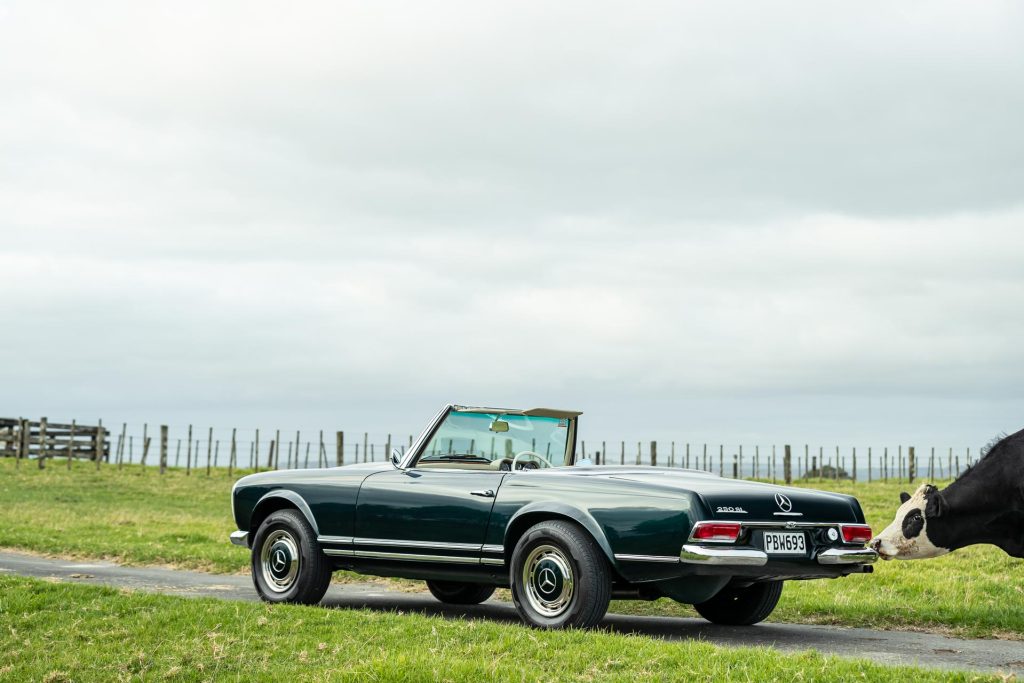
This came as part of the deal, though it hadn’t been fitted. When driving the car in Australia, the SL was churning away at 3500rpm doing 100km/h.
Back in the day it wouldn’t have mattered but, wanting a more relaxed cruiser, the six-speed conversion would make for a better drive.
According to The SL Shop, you just ‘drop the new gearbox in’. So that’s what Trevor at the Toy Shop did.
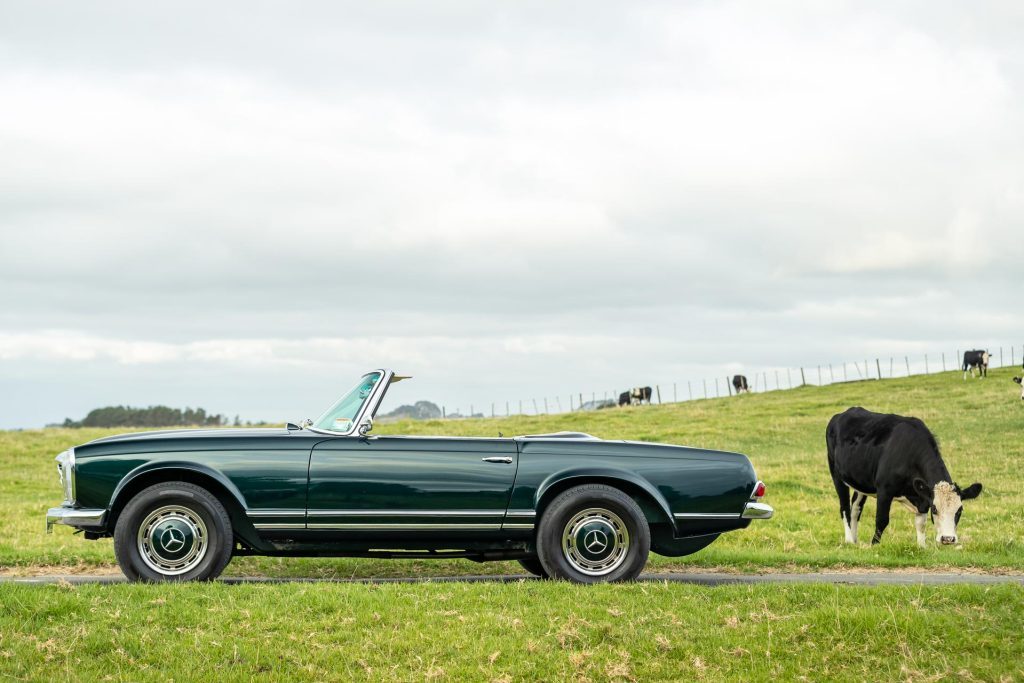
However, later he’d call to say; “when we started it, it made a noise.” What sort of noise, I enquired? “A sort of a loud, rattly, drain-your-bank-account sort of noise.”
Wearily I phoned The SL Shop to relate my rattly tale and they asked had we fitted the provided clutch plate? Hmm, I thought, what “provided clutch plate”? Anyway, they sent one out, and this sorted the rattle.
Trevor then took my SL off to be certified and all seemed okay, except for one line on the report stating “have all the rust repairs certified”.
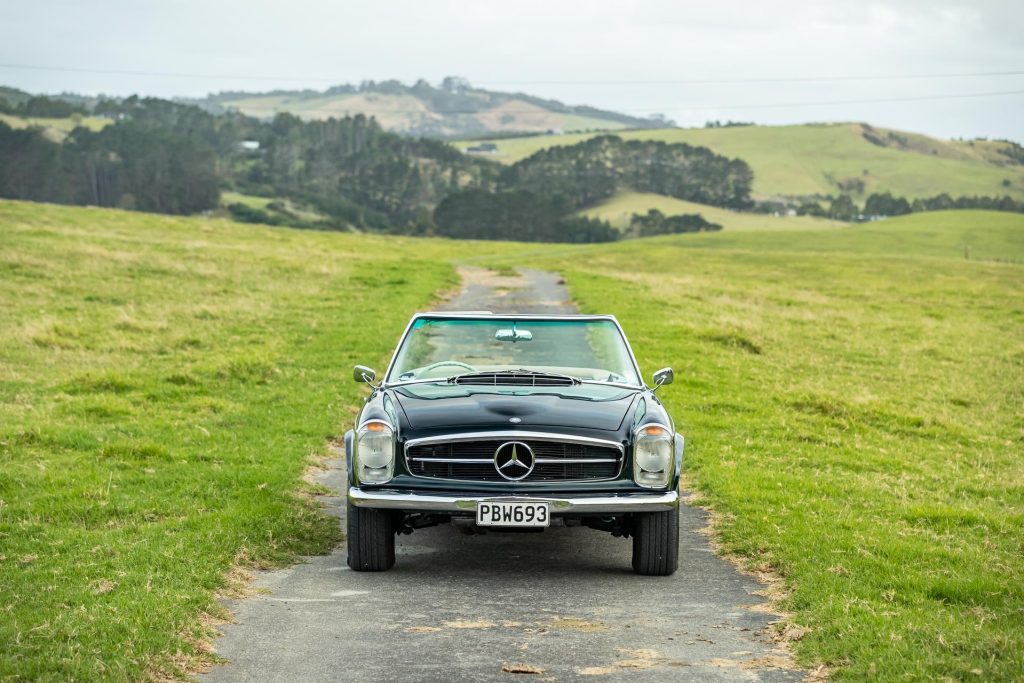
This referred to a few welded patches here and there, so I thought how hard could it possibly be? So I was off on a hunt to find a rust fixer.
I made a few calls and took the car to a sand blaster who took to the underneath of the SL (destroying the new shock absorbers in the process) so that the fixers could see the extent of my problems.
Unfortunately, the underside was now looking a bit like a colander. I decided to find a fixer outside of Auckland, because someone had said they were cheaper.
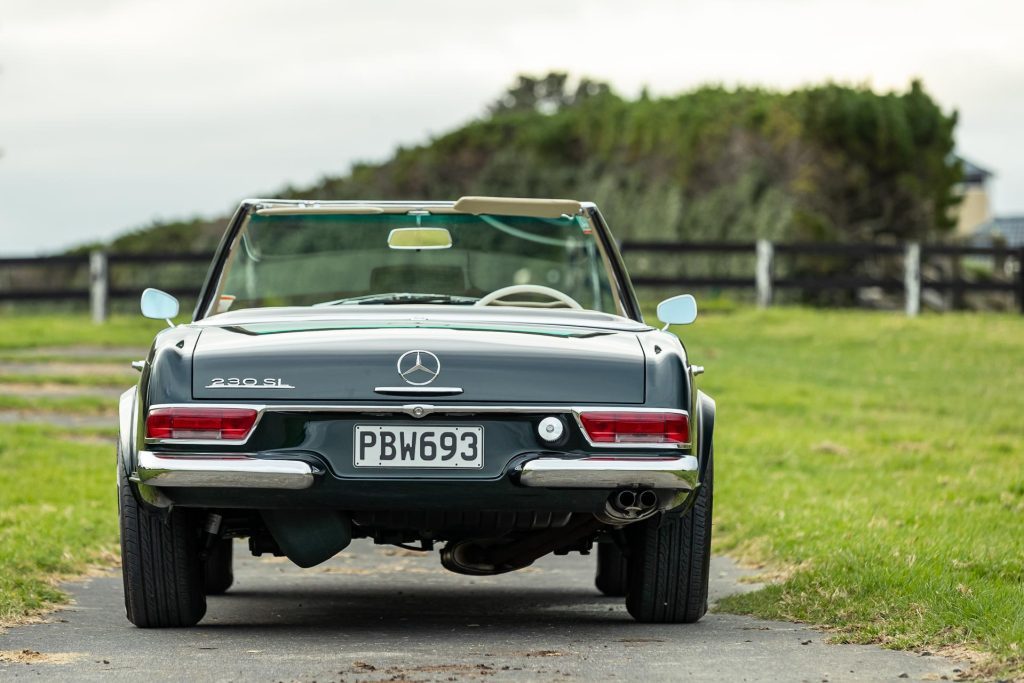
The first two places said the same thing; ‘It’s rotten mate, it’ll cost $200,000, and take two years to fix’. Not being able to handle the truth, I moved on, hauling it to Ngatea Panelbeaters.
Phil was excited when he first saw it. A sum of ‘$40,000’ was mentioned, but what really sold me was his enthusiasm. So there the car would stay for the next few years as almost every underbody panel and much of the exterior was replaced.
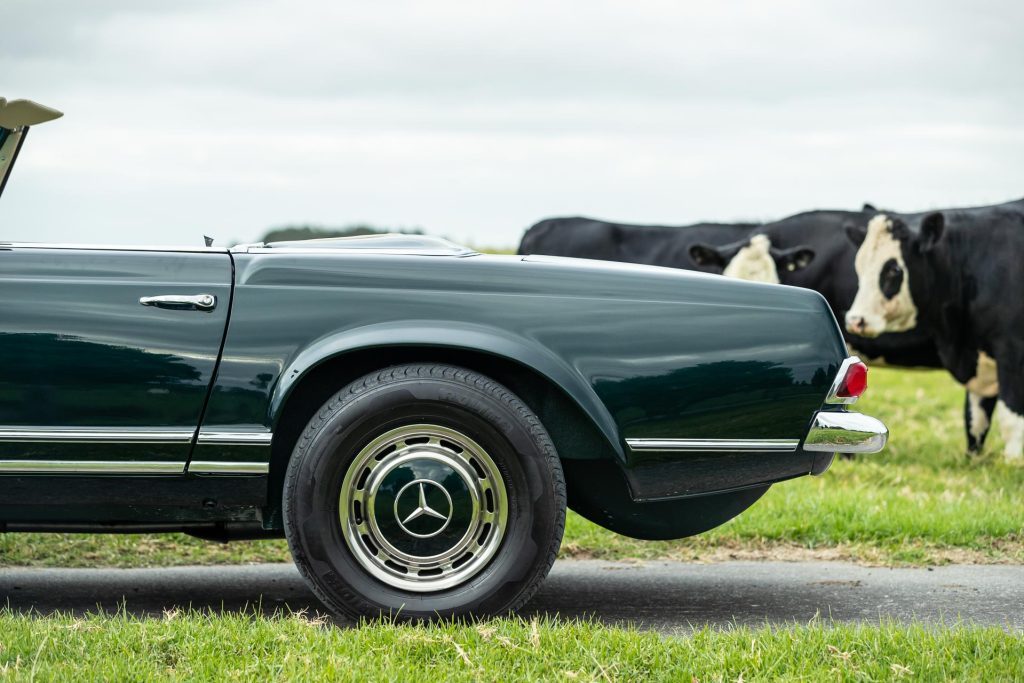
Pagoda Background
During the process, I developed a relationship with various SL specialists around the world and at one stage I was corresponding with Boris Bracq, the son of Paul, who designed the Pagoda.
Born in France, Paul Bracq learned his design trade at a furniture school in Paris where his tutors allowed him to carve model cars rather than turn fancy chair legs.
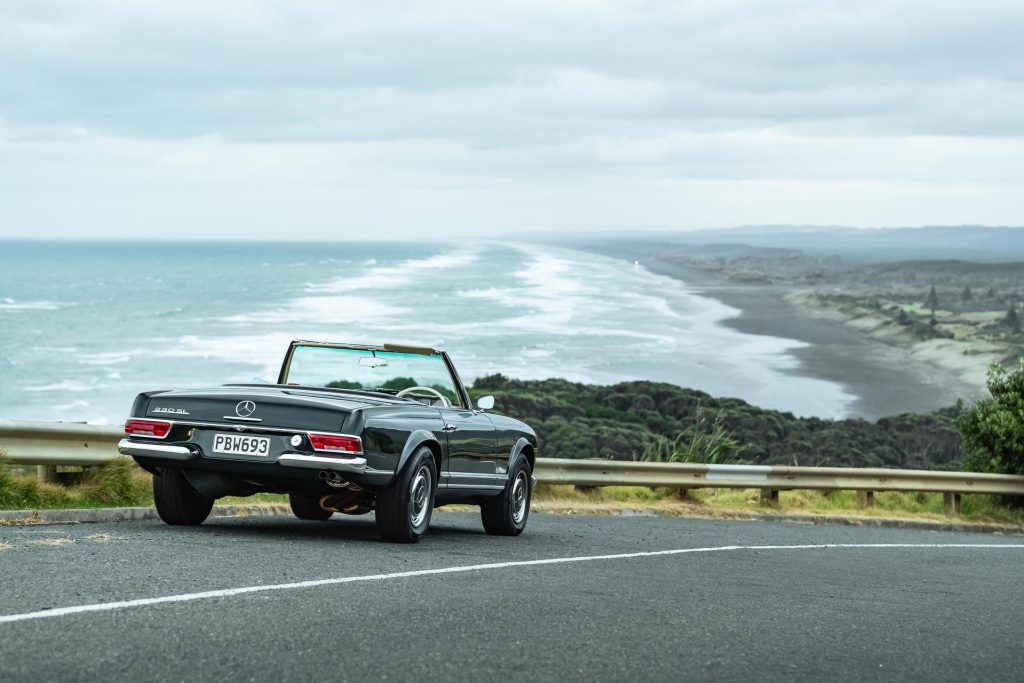
In his early years he had some links with Pegaso, the French maker of beautifully styled cars. But at the time these French coach builders were failing and while in the military on a posting to Stuttgart Bracq dropped off a few drawings to Mercedes-Benz.
A few years later, he would join the company in 1957. Bracq was with Mercedes for 10 years and set the design language right through to the end of the 1970s.
His two iconic designs were the 230 SL and the Mercedes 600, the ‘Grosser’ beloved of movie stars and despots around the world.
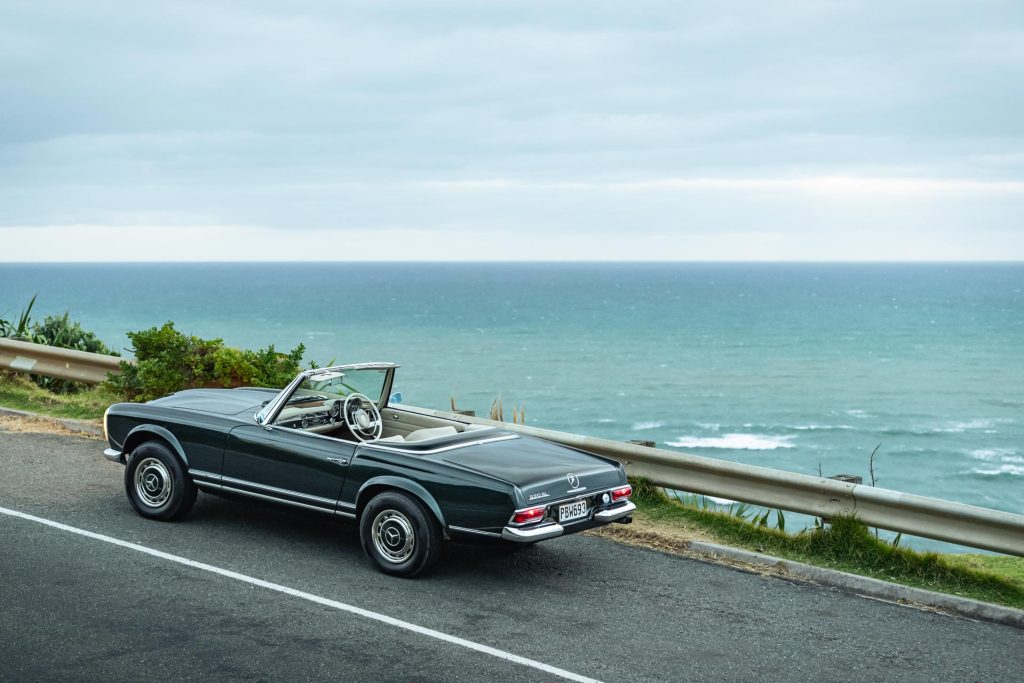
Bracq’s designs were clean, with strong horizontal lines and a big glass house.
He said; “In a car, I always liked to see clearly to communicate better with the environment. To increase the glazed surface, I lowered the body line and the result was a safer car.”
I always think that a car feels easier and more enjoyable to drive when you can see the ground close to the front and all around the car, and Bracq obviously gave this a lot of thought.
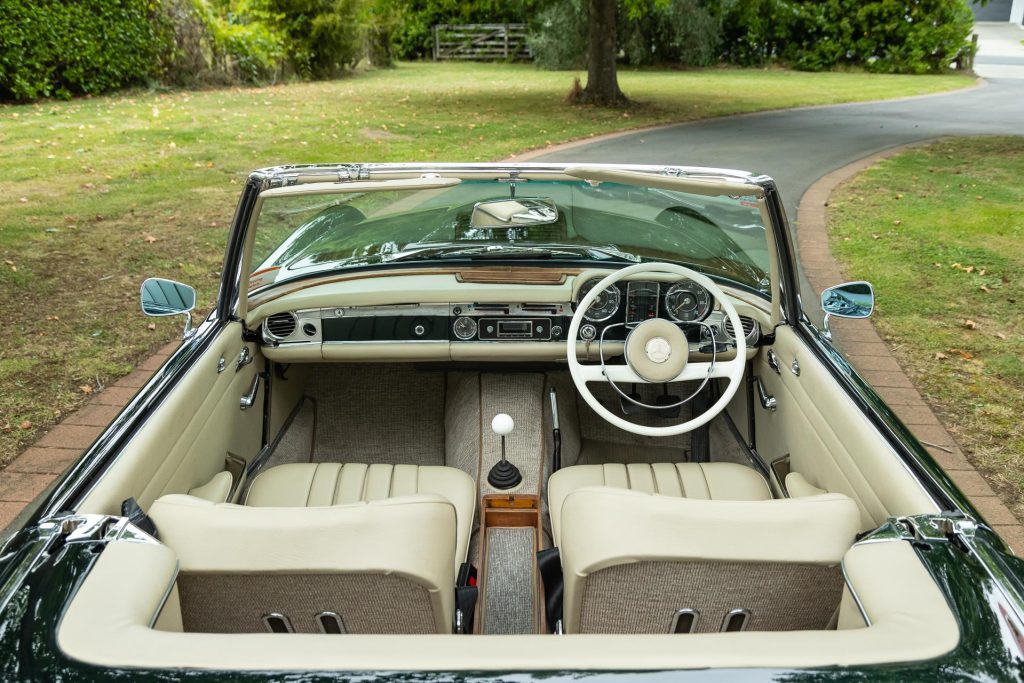
Bracq collaborated with a Mercedes safety engineer, Béla Barényi, in 1958 to design the K55 concept car. This odd looking machine had a symmetrical design front to rear to reduce the complexity of the panels.
It also had a load-bearing, Pagoda-type roof “for carrying luggage or perhaps even sleeping bodies.”
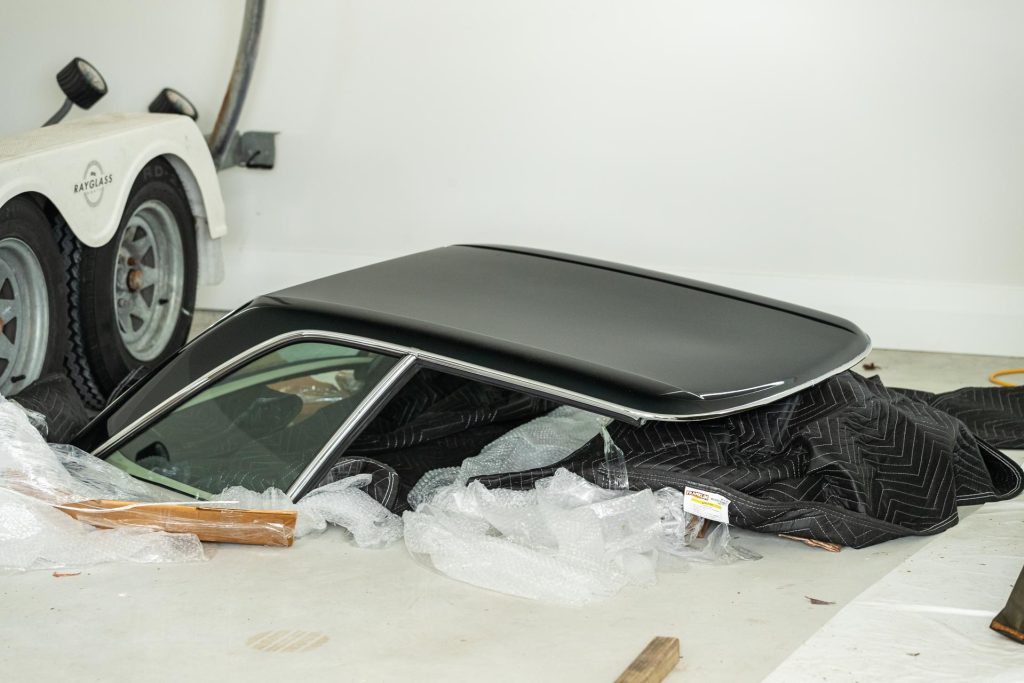
Several design elements of the K55 ended up on the Pagoda, including crumple zones. The SL is possibly the first production car with a passenger compartment stronger than the front and rear sections.
It also adopted the Pagoda roof. Bracq recognised the roof shape as providing greater visibility and possibly greater strength.
However he did harbour misgivings about it, saying in 2009; ‘In truth the Pagoda is something of an aerodynamic disaster. The concave roof compromises the Cd figure.
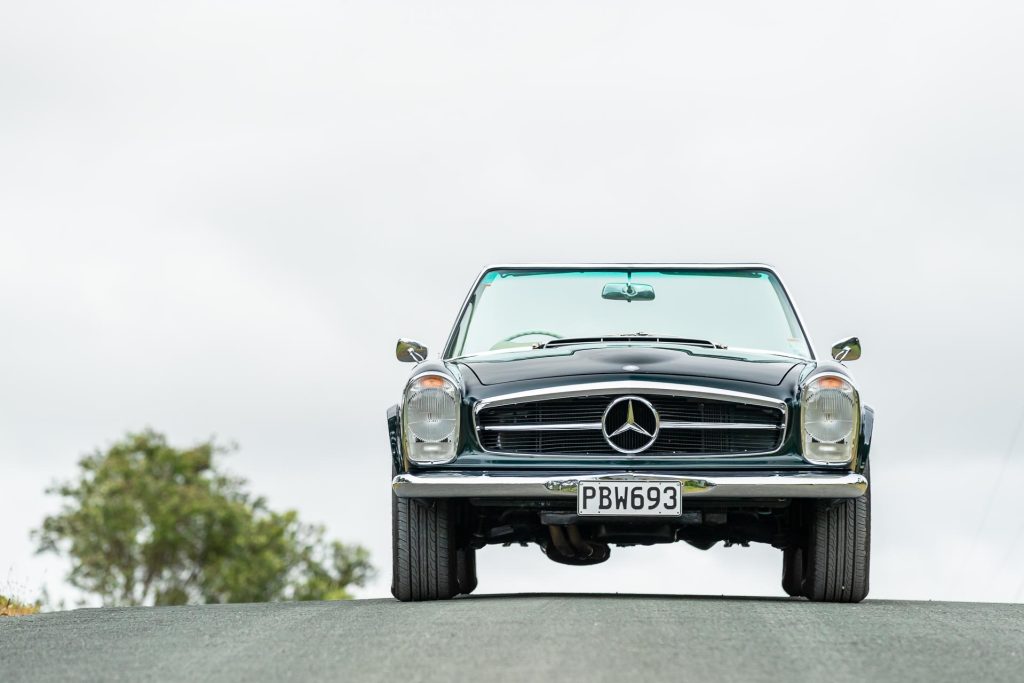
But it’s what Barényi wanted. And in terms of image, that unusual roof design was to prove a godsend.’
A design feature that Bracq wasn’t particularly happy with has come to define the car.
While the styling is elegant, the engineering is equally so. The car is simple yet solid. The doors are works of art. Both the frames and skins are made of aluminium, so are lightweight.
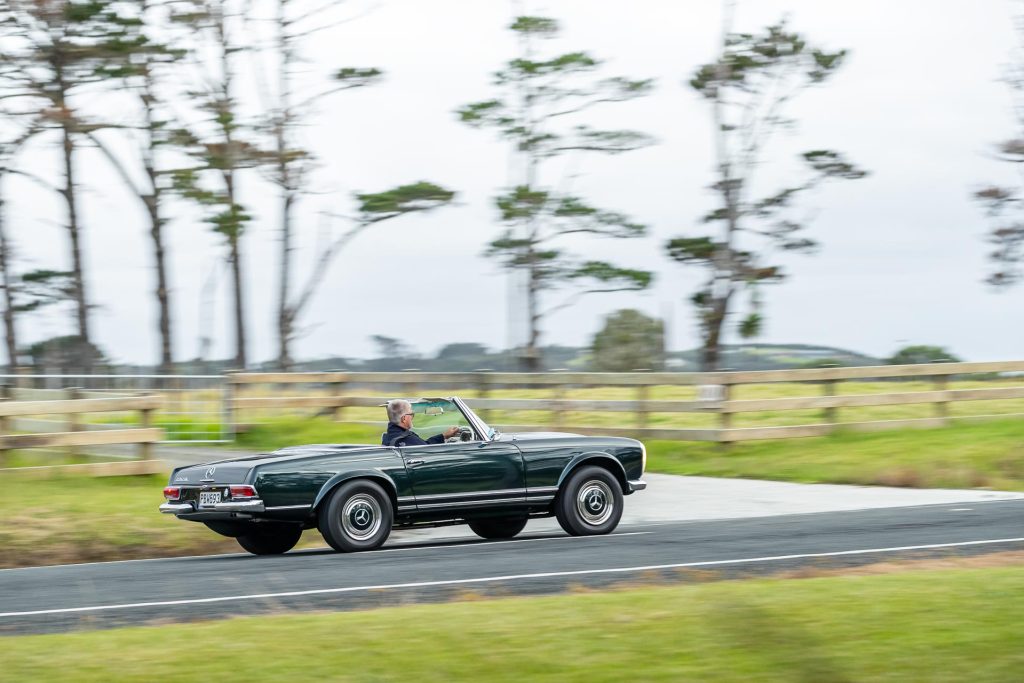
However, Mercedes then stuck two chromed brass strips on each that weigh as much as the door itself.
The SL has a single-pivot swing arm suspension design at the rear. This was an improvement on the double-pivot swing arms of the Gullwing, and it gave a smooth, supple ride.
It did mean that under certain conditions, say when cornering at speed over the crest of a hill, the outside rear wheel could tuck under, jacking the car into uncontrollable understeer (note to self, don’t speed).
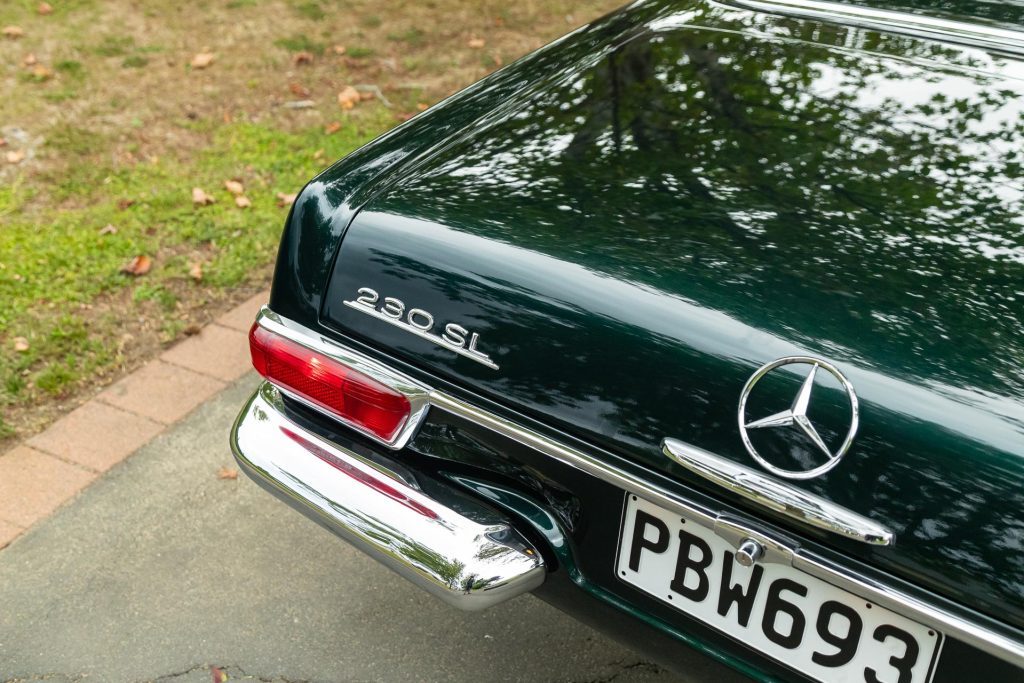
Choices, choices
Looking back, it’s interesting that I selected the Mercedes from my list, having always been a bit of an Italian car fan and owning a Fiat 128SL in my youth.
But my Dad, who fought in WWII, had owned a few Mercedes, so he must have forgiven the Germans on some level.
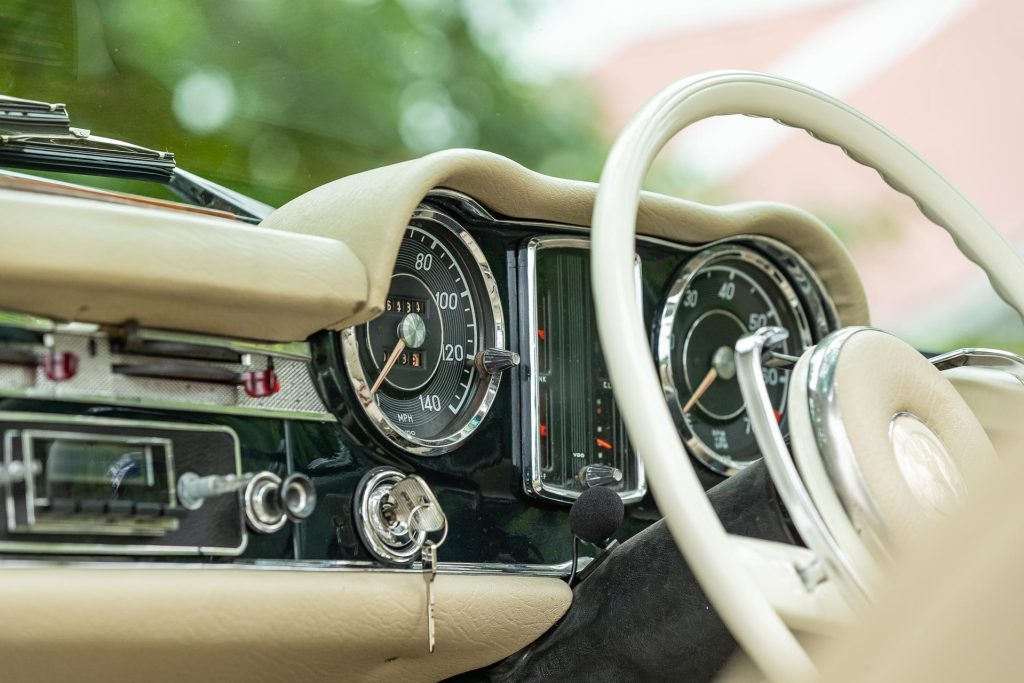
He was not flashy but appreciated solid engineering. He owned a 1958 “roundy” that I learned to drive in, and later bought a 1972 220S that I inherited and later sold in 2002 for $2000.
Back in Ngatea, Phil and Sunil worked diligently on re-building the car. There was a point, probably just after the “sand blasting” where I needed to make a decision.
I could get it back on the road for around $20,000, or go the whole hog. It was a conscious choice to restore it properly.
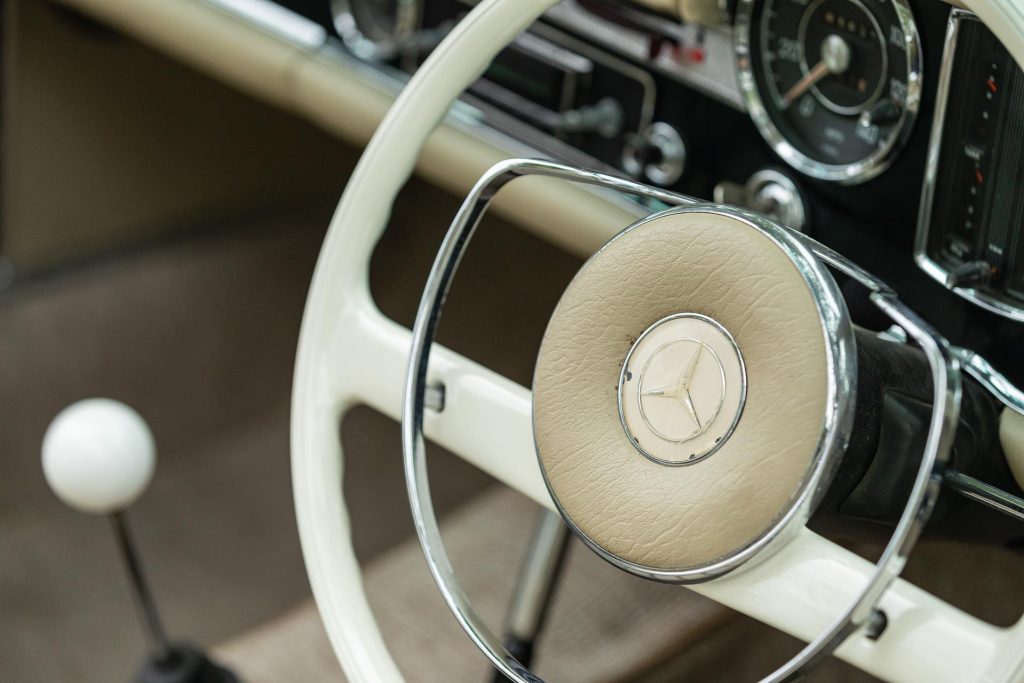
I was buoyed by the fact that really good ones were selling for $250,000 and re-built Pagodas out of the Brabus factory in Germany were selling for $530,000.
While the car I purchased was white, the original colour was green. I decided to change it back, albeit with a dark metallic flakey hue, dubbed Holden Regal Peacock. Thames Collision Repairs did a great job of the repaint.
In May of 2021, the car was ready for certification when I got a text from Phil. Turns out the car had made a mechanical graunching noise when being driven up onto the trailer and was now dead.
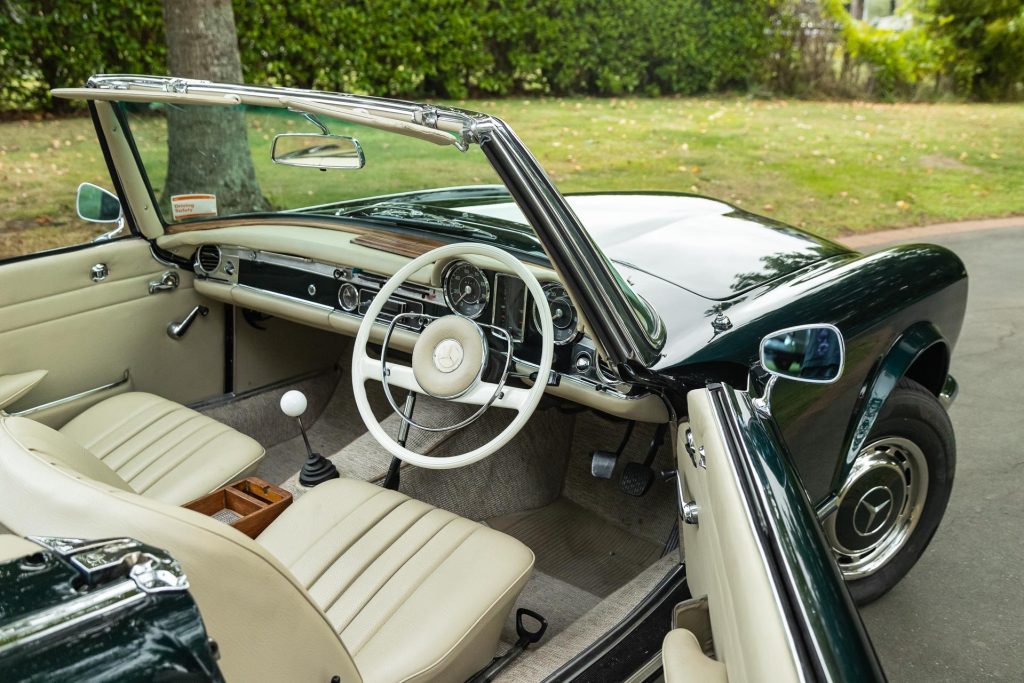
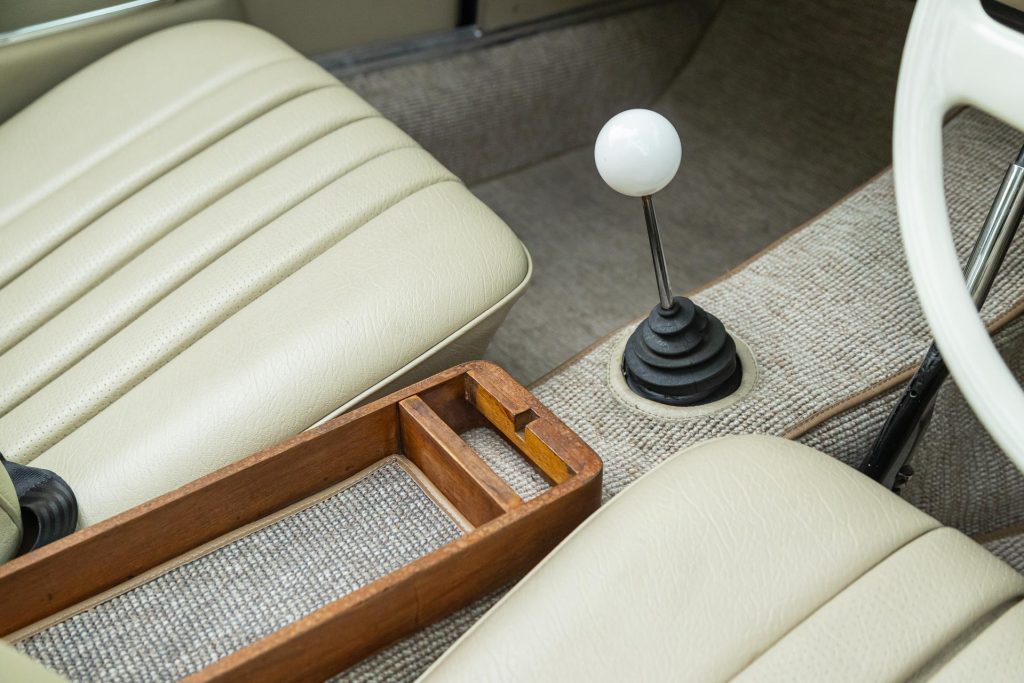
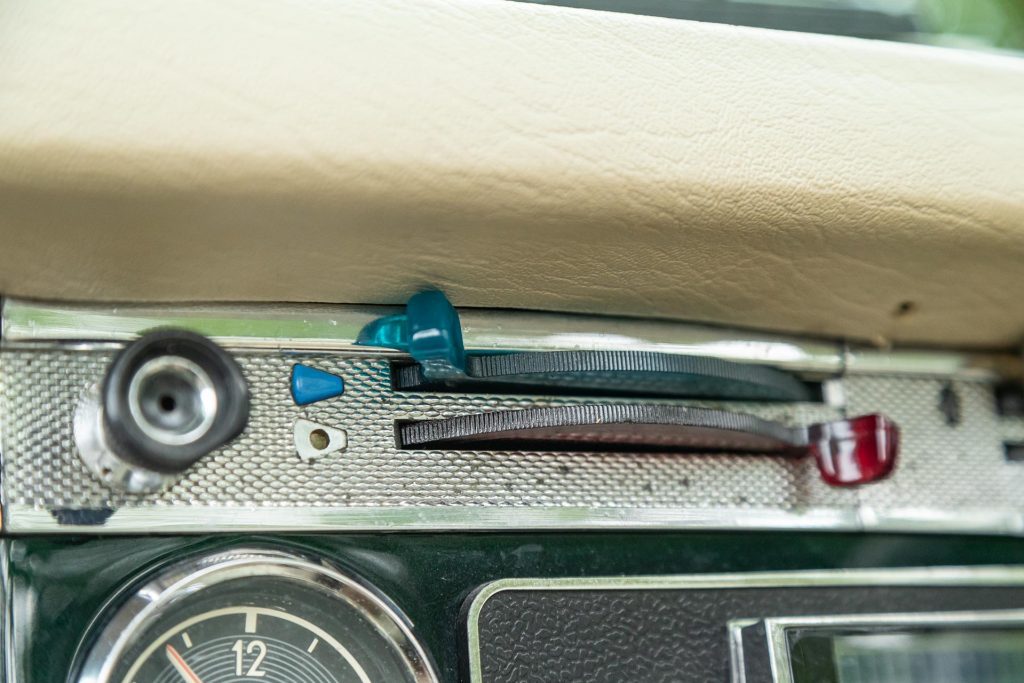
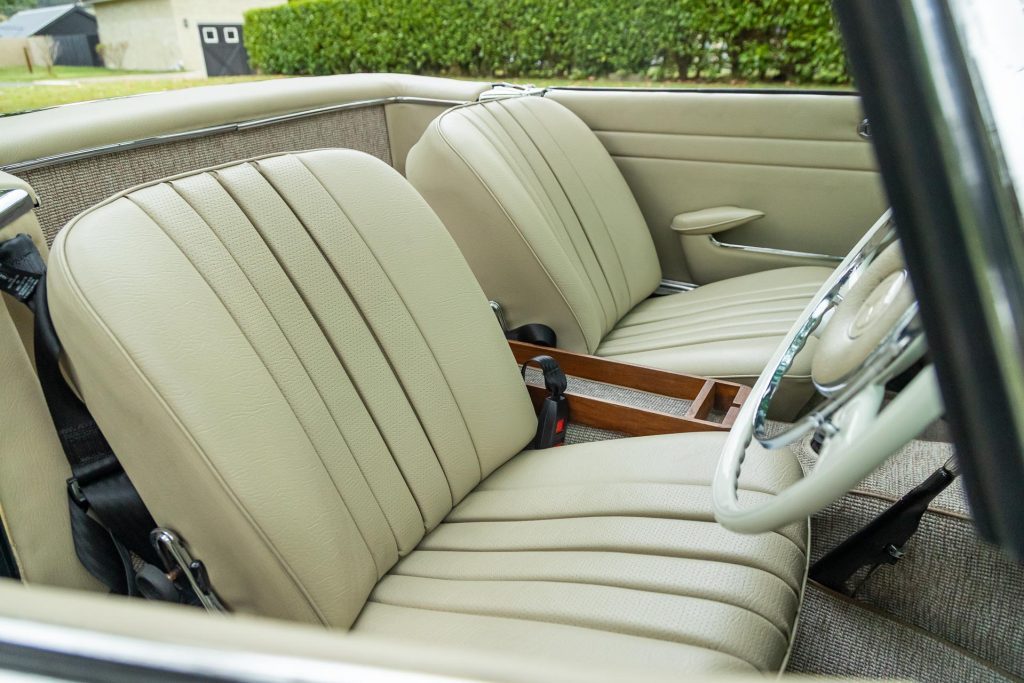
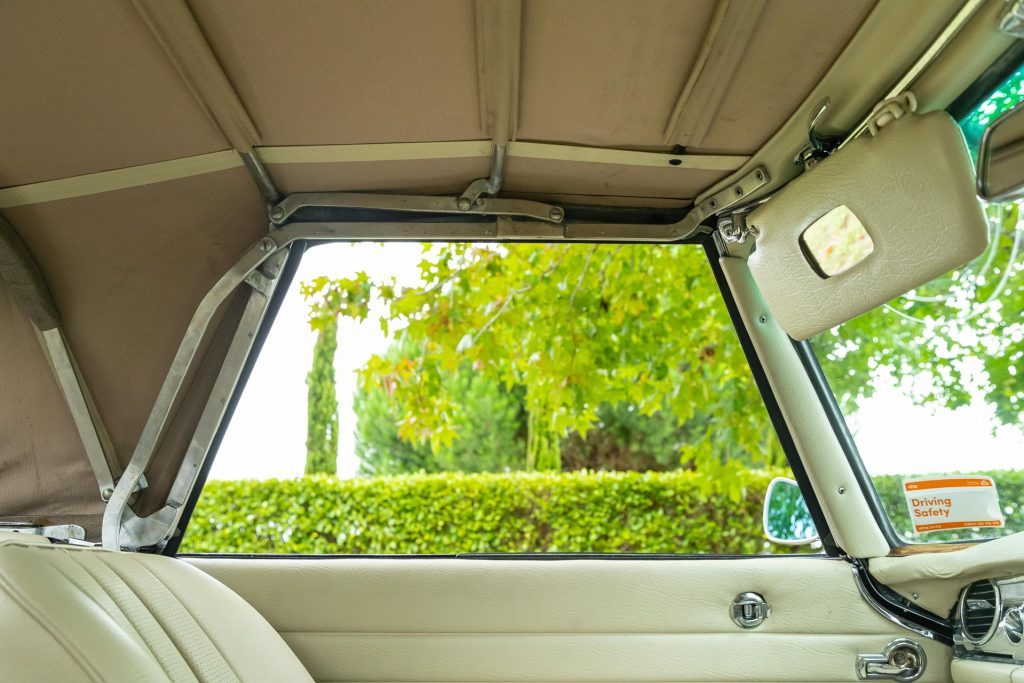
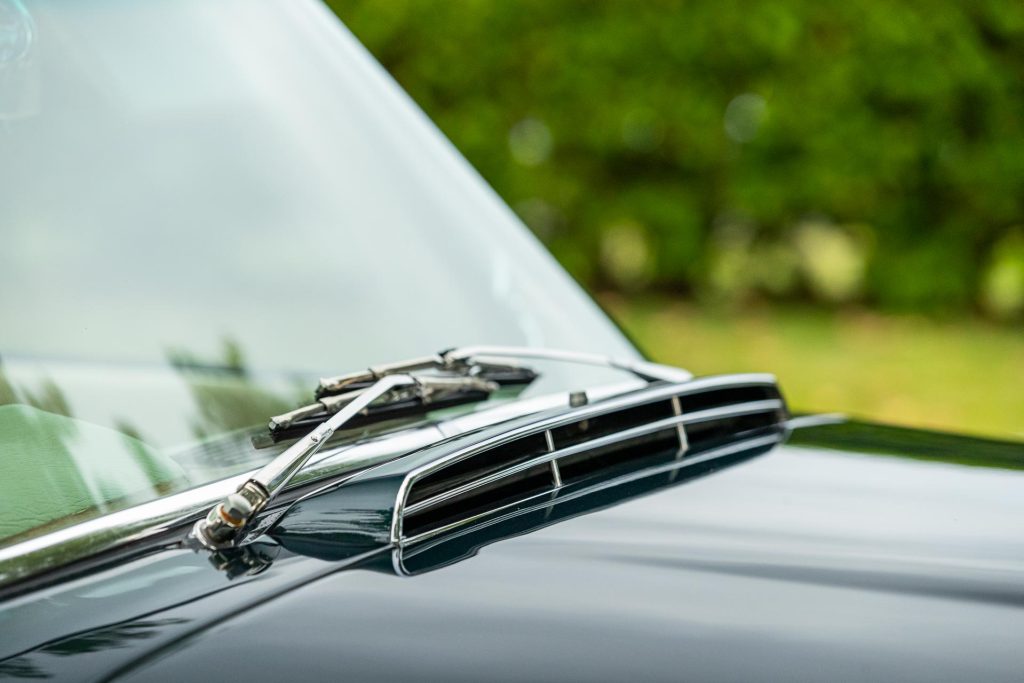
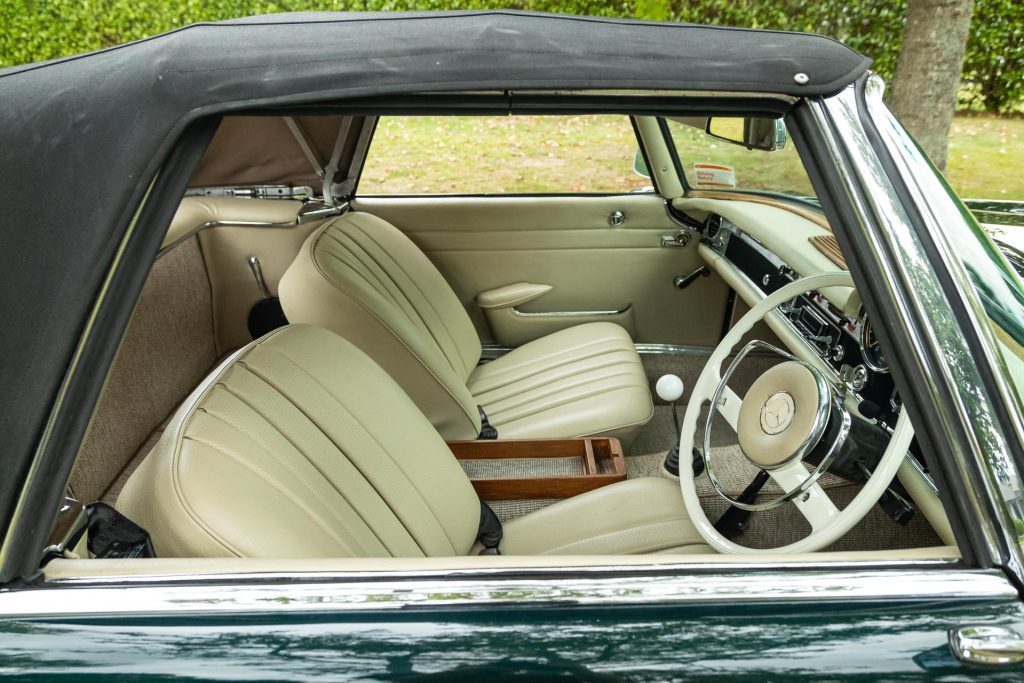
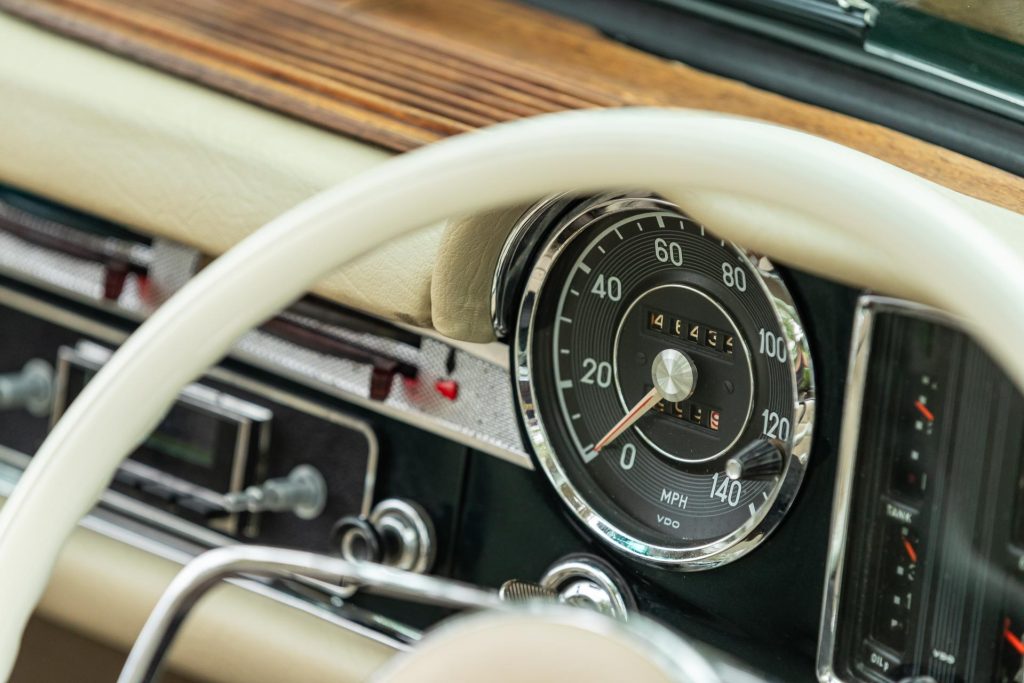
The mechanical fuel injector pump had seized, so it was back to the Toy Shop. An exhaustive global search for a pump turned up nothing, though they all said ‘send us the old one and we’ll fix it’.
Then Trevor suggested converting it to electronic direct injection. That took an age, and it was proving to be quite temperamental. But we persisted and eventually we got it running, registered, and warranted.
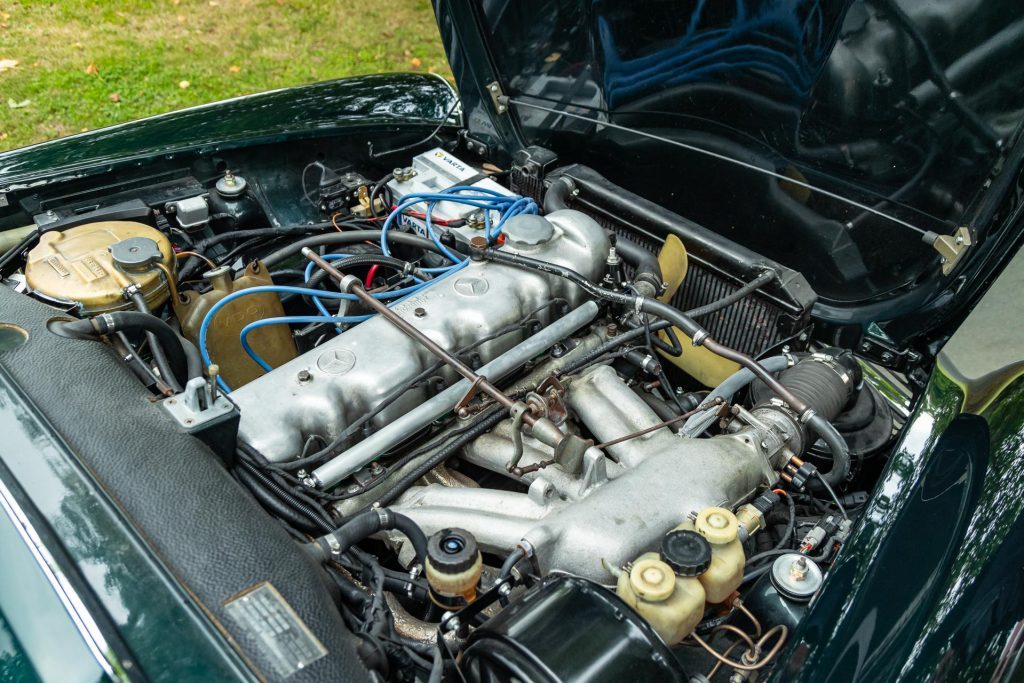
Final Touches
In early 2023 the car came home, having not seen it for six months. Once committed to the rebuild, I never considered giving up. But there were times when I got right pissed off and hardly wanted to look at it.
Whenever I was asked ‘what’s it costing’, I always said ‘hardly nothing’ which was both grammatically correct and a good way of hiding the bleeding bank account.
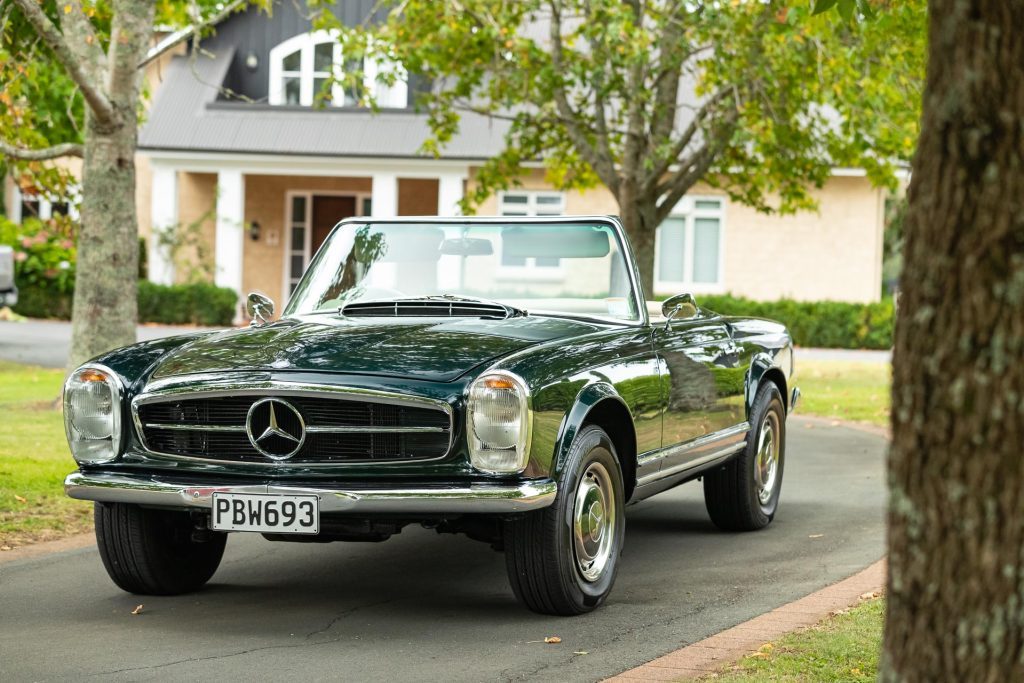
It’d only take a half hour to add up the invoices but it’s something I’ll never do; it would just be too depressing.
There was one last thing to sort and that was the hard top. Once the paint and bog had been removed from the car’s original roof, it looked like a pathetic scrap of metal.
While Phil said he could fix it, I decided to find a better one, eventually hunting one down in Miami.
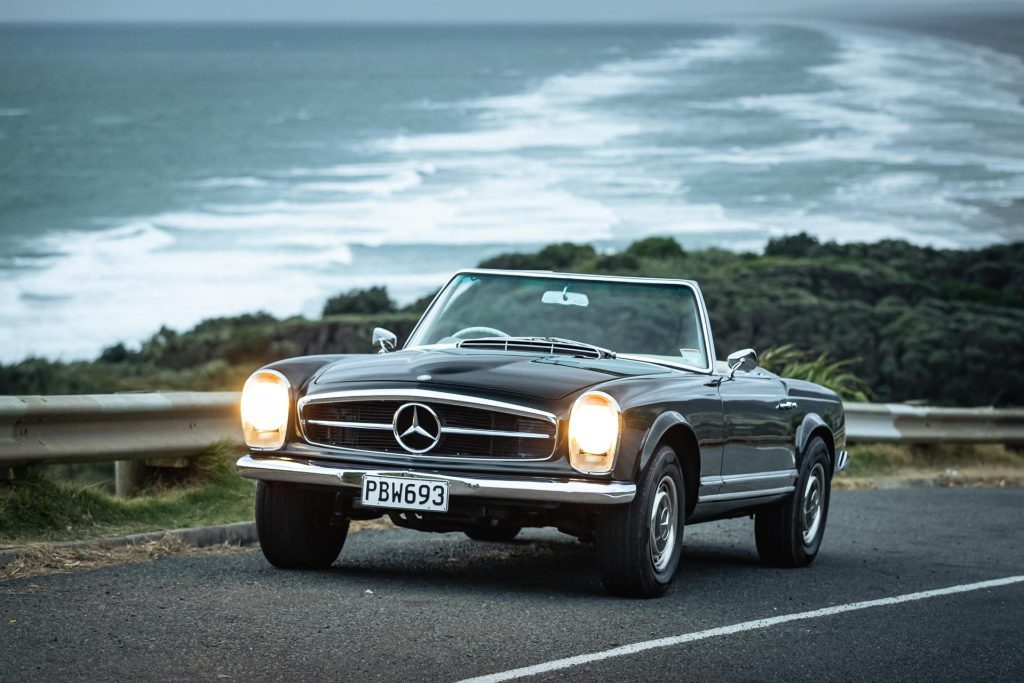
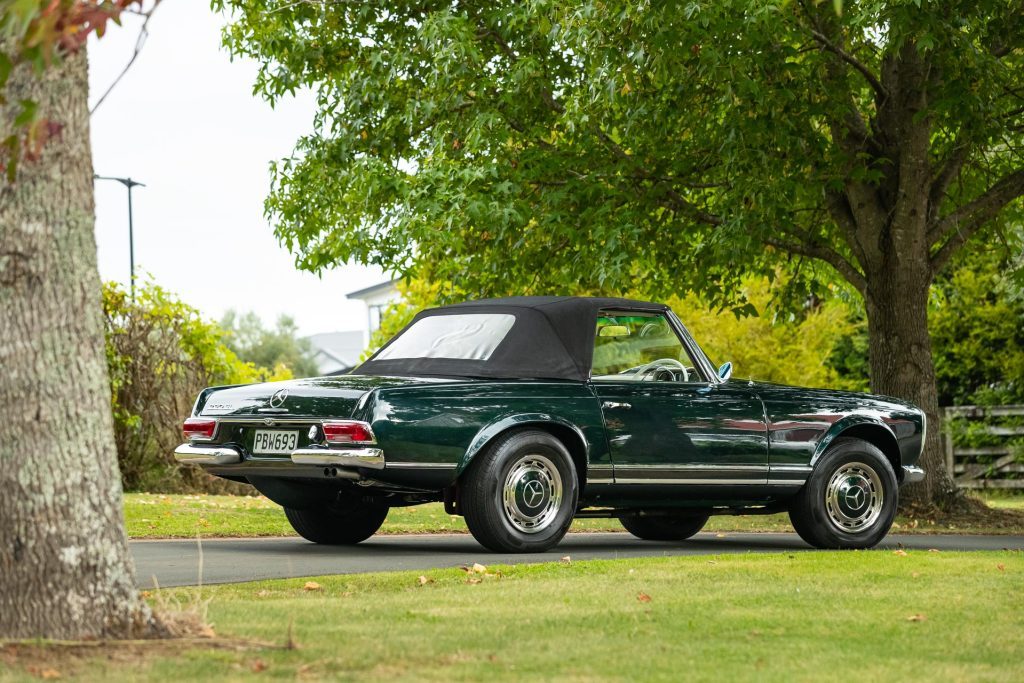
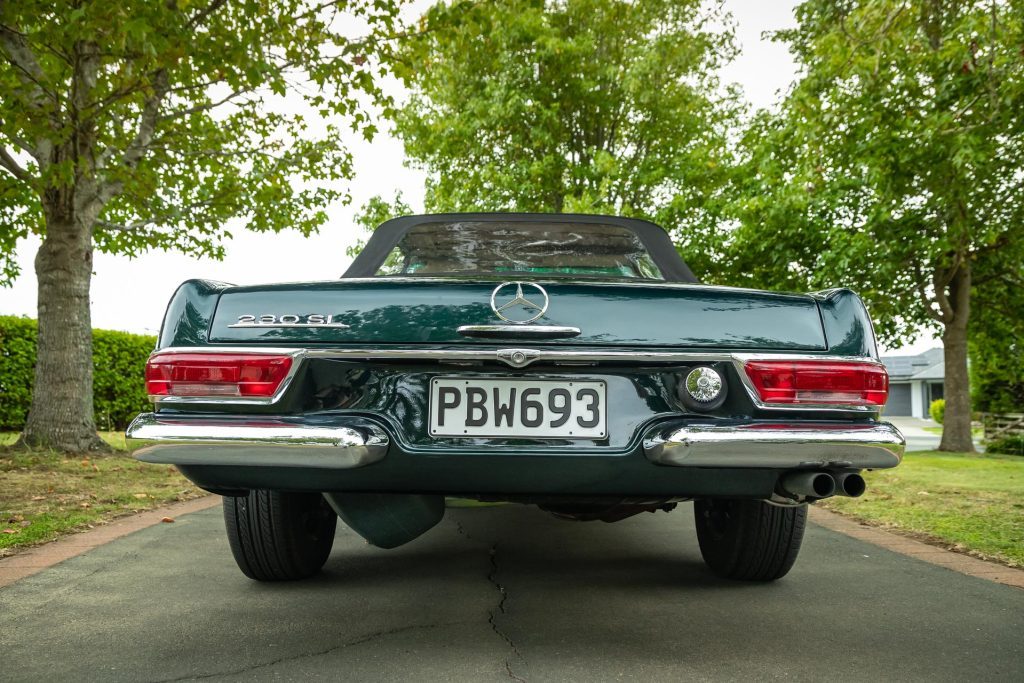
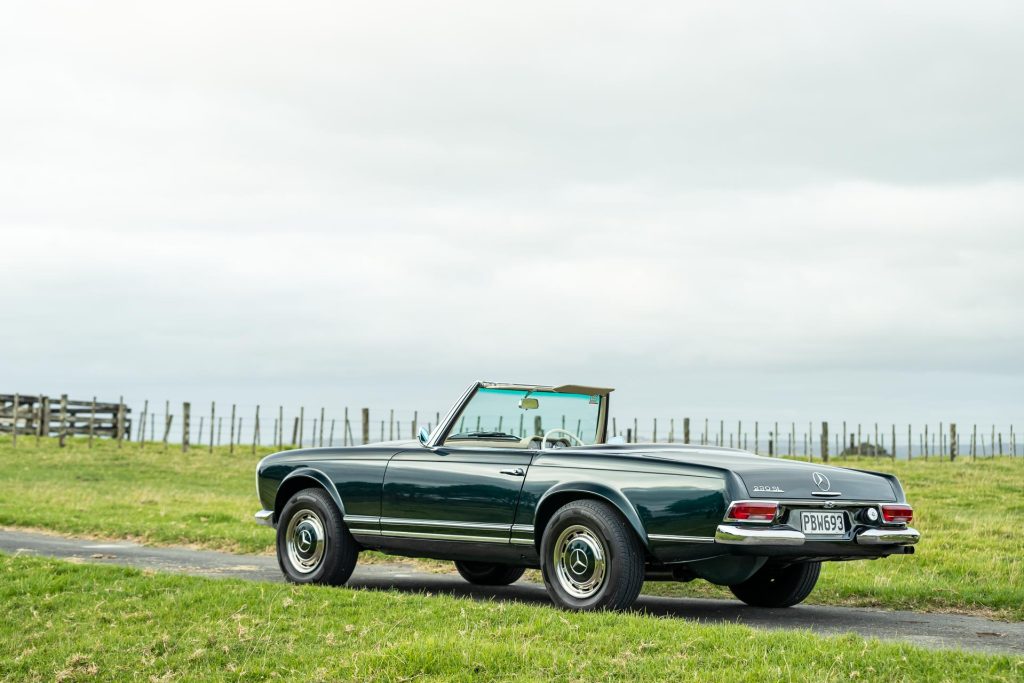
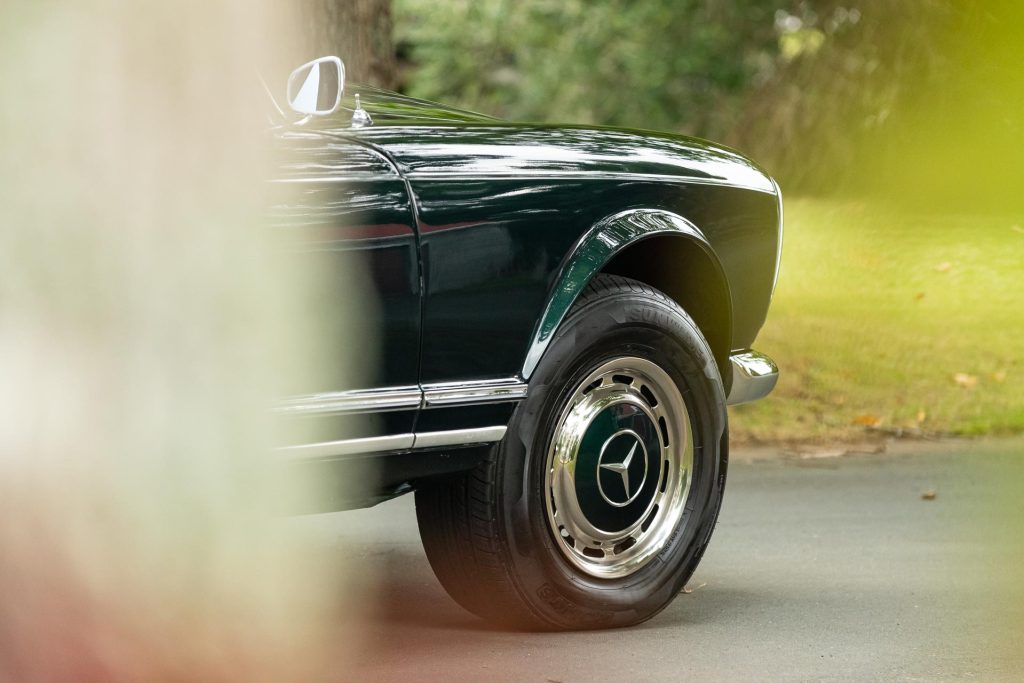
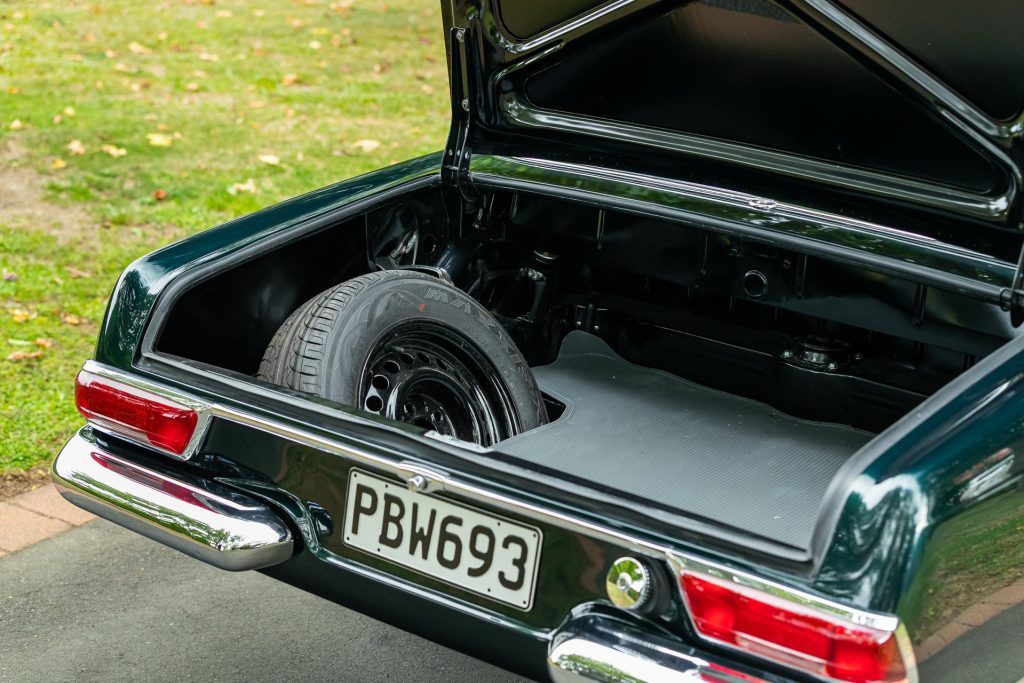
While they said I’d get it by Easter, all painted and pretty, after a terse email, I received it just before Christmas. I’ll put it on when summer is done (and the attachment parts arrive).
Finally the car is ready and better than I ever hoped it would be. With the modern fuel injection, it’s running trouble free.
Well, there’s just the right amount of ‘trouble’ at start-up so everyone knows it’s an old car.
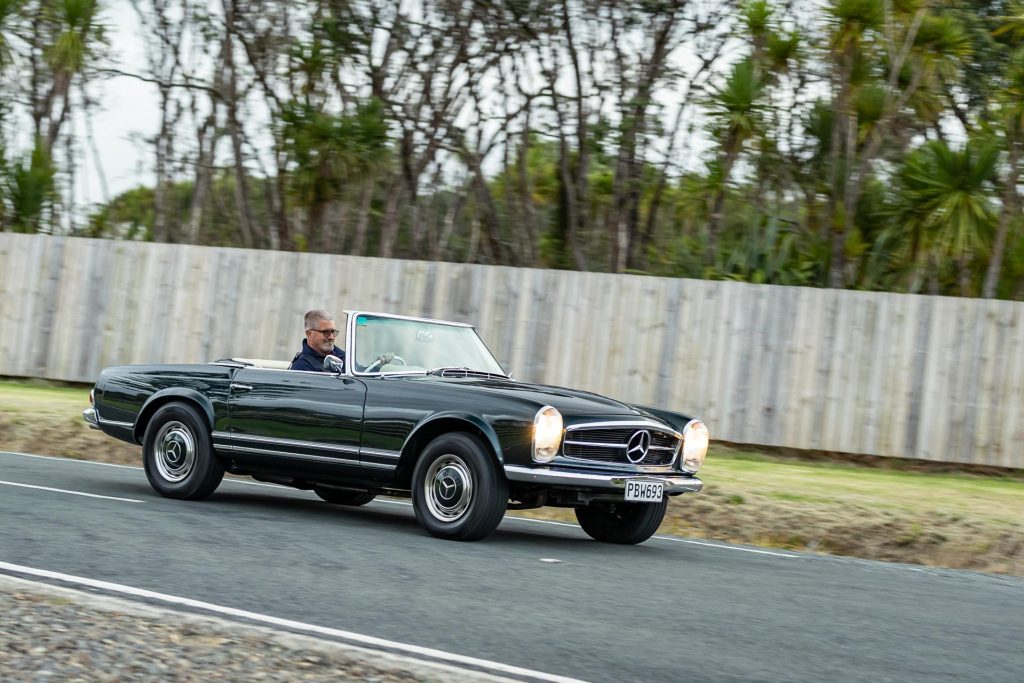
I hoped that with the six-speed box it would cruise serenely, and it does. The ride is smooth and supple and the motor sings sweetly with a ticking overlay that I remember from Dad’s old Mercedes.
I ditched the skinny, white wall tyres and shod it with the fattest ones I could find as a nod to living in west Auckland.
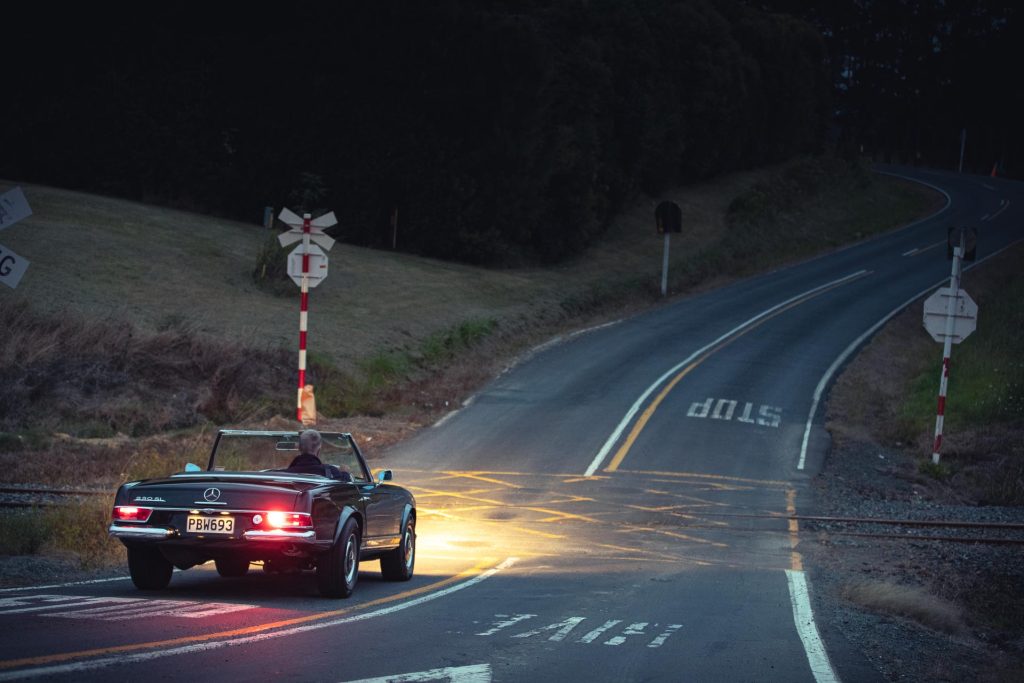
The ride to get here wasn’t so smooth and serene, but now that it’s done we will join the club and grow old together.
This story first appeared in the April 2024 issue of NZ Autocar magazine.


